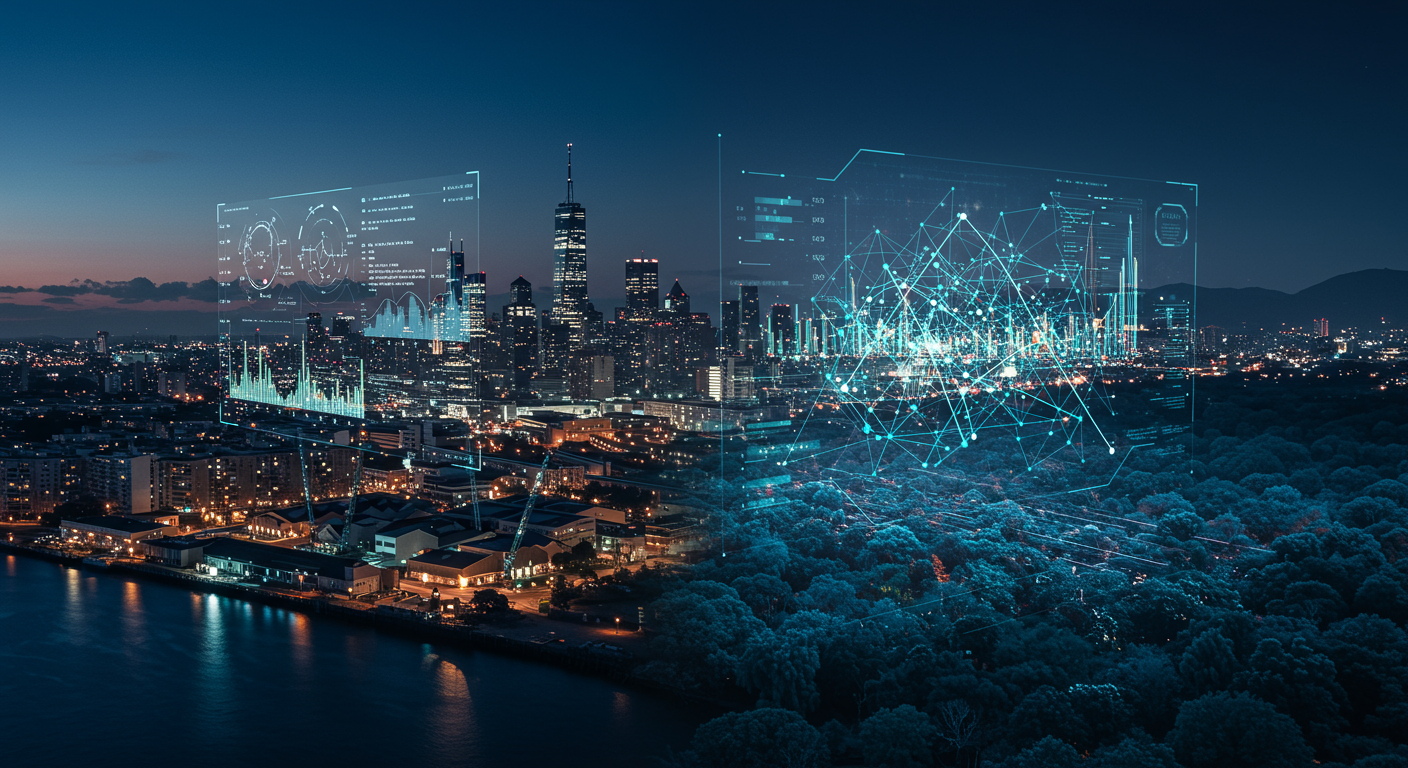Can You Get Very Close to Reality with Predictions from Models?
The age-old quest for the crystal ball, now fashionably disguised in lines of Python code. Can our lovingly crafted models, our digital doppelgängers of reality, actually tell us what's going to happen with uncanny accuracy? It's a tempting thought, isn't it? To peek around the corner of time and see the future unfolding, all thanks to a bit of simulation.
The short, and perhaps mildly unsatisfying, answer is: sometimes. The longer, more nuanced, and infinitely more interesting answer is that it's a bit like asking if your holiday snaps will ever truly capture the majesty of the Grand Canyon. They can get you pretty darn close, evoke the feeling, help you plan your next trip, but it's rarely the thing itself.
Let's first address the elephant in the server room, trotted out by statisticians at dinner parties for decades: George Box famously quipped, "All models are wrong, but some are useful." And isn't that just the perfect blend of bleak realism and cautious optimism? The statement isn't a dismissal of modelling; rather, it's a crucial reminder. Our models are, by their very nature, simplifications. We're trying to distill the messy, chaotic, and often downright baffling workings of a system into a set of rules and interactions. To expect a perfect mirror image of reality from this process is perhaps a touch… ambitious.

So, how close can we get?
Imagine, if you will, observing a helicopter. When you're standing right beside it, your model of the world includes the intricate texture of the grass, perhaps individual blades. Useful, if you're a botanist. As it ascends, you lose that detail but gain an appreciation for the shape of the field, the surrounding roads, a few scurrying cars. This model helps with local traffic. Higher still, and you see networks, the flow of a city, entire systems of systems – a model for urban planners. The fidelity of your model, the level of detail you bake in, is entirely driven by the question you're trying to answer. Trying to predict global weather patterns with a model that details the fluttering of every butterfly wing? Good luck with that supercomputer bill. Conversely, trying to optimise a single production line with a model that only considers continental supply chains might miss the mark.
The proximity of a model's prediction to reality hinges on several, rather important, factors:
- The Sanctity of Your Assumptions: Every model is built on a foundation of assumptions. If these assumptions are as wobbly as a poorly-made jelly, then your predictions, no matter how beautifully the code is written, will likely follow suit. Understanding the system deeply, perhaps through some diligent whiteboard modelling before a single line of Python is typed, is paramount.
- Data, Glorious Data (or the lack thereof): A model is a bit like a very sophisticated sausage machine. What you put in dramatically affects what comes out. If your input data is sparse, biased, or just plain wrong, then your predictions will be, shall we say, an acquired taste.
- Validation: The Reality Check: How do you know your model isn't just a figment of your very logical imagination? Validation against real-world data (where possible) is crucial. If your simulation of a coffee shop consistently predicts an average waiting time of three seconds, while real customers are ageing visibly in the queue, something, somewhere, has gone a tad pear-shaped.
- The Whims of Lady Luck (Stochasticity): Many real-world systems have an element of randomness. Customers don't arrive at perfectly timed intervals; machines don't break down on a predictable schedule. This is where techniques like Monte Carlo simulations come into their own, allowing us to run our model thousands of times with different random inputs to understand the range of possible outcomes, not just a single, deterministic prediction. It's less about predicting the exact number of widgets produced next Tuesday and more about the probability of producing between X and Y widgets.
- Complexity and "Black Swans": Some systems are inherently more complex and chaotic than others. Financial markets, for instance, are notorious for their ability to make even the most sophisticated models look a bit silly when an unforeseen event (a "black swan") flaps its wings.
So, can we get "very close"? For well-understood systems, with good data, robust assumptions, and appropriate validation, predictions can be remarkably accurate and incredibly useful for making informed decisions. Think of optimising a production line in a factory, predicting patient flow in a hospital, or even figuring out if a proposed railway junction will cause delightful or disastrous delays. The insights gained from these "useful" (if not entirely "right") models can save fortunes, improve efficiency, and prevent costly real-world mistakes.
Indeed, being able to conduct a full factorial analysis, testing all possible combinations of your input parameters, can give you a profound understanding of how different factors interact and influence the outcome. This moves beyond simple prediction into the realm of deep system understanding.
The aim, often, isn't to achieve flawless clairvoyance but to provide robust decision support. If a model can consistently show that Option A outperforms Option B under a variety of conditions, or highlight critical bottlenecks in a process, then it's earning its keep, even if its absolute numerical predictions aren't pixel-perfect with reality.
The journey to creating more predictive models is one of continuous learning and refinement. If you're keen to delve deeper into the art and science of making your simulations more than just educated guesses, there are resources that can illuminate the path.
Perhaps you're just starting your Python journey and want a solid foundation? "The 10-Day Python Bootcamp for Engineers and Scientists" could be your launchpad.
If you're intrigued by the power of SimPy specifically, my book, "Simulation in Python with SimPy," normally $9.99 on Amazon, is available for free and packed with practical examples.
Ready to become a go-to expert? My free masterclass, "How to Become a Go-To Expert in Simulation with Python," maps out the journey.
And for those looking for a comprehensive deep dive, my flagship course, the School of Simulation, awaits.
In conclusion, while our models might always remain elegant approximations rather than perfect replicas, they can indeed get us very close to understanding reality, close enough to make significantly better decisions. And in a world of ever-increasing complexity, that's a superpower worth cultivating.

